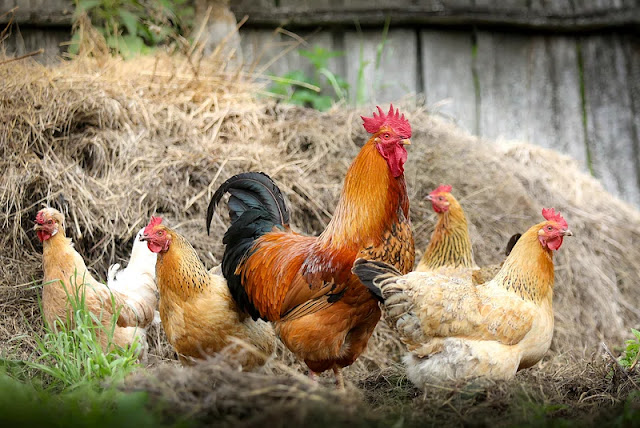Bird flu, also known as bird flu, has once again hit the United States, causing concern across the country. This article aims to provide a comprehensive explanation of the current situation, shed light on various aspects of the epidemic and offer insight into its consequences.
What is bird flu?
Bird flu is a highly contagious viral infection that primarily affects birds. There are several strains of the virus, with the H5N1 and H7N9 variants being the most well-known due to their potential to infect humans. In birds, the virus can cause serious illness and often lead to death.
A history of bird flu
Bird flu has a decades-long history, with sporadic outbreaks around the world. These outbreaks have varied in scale and severity, with some resulting in significant economic losses and others raising fears of potential pandemics.
Current situation in the USA
A recent outbreak of bird flu in the US has raised alarm in the public health community. The virus has been detected on poultry farms in multiple states, prompting swift action to contain its spread. Despite efforts to control the epidemic, the virus continues to pose a threat to both animal and human health.
Symptoms of bird flu
Identifying the symptoms of bird flu is essential for prompt diagnosis and treatment. In birds, symptoms may include respiratory distress, reduced egg production and sudden death. In humans, symptoms can range from mild respiratory illness to severe complications such as pneumonia and organ failure.
Bird flu transmission
Bird flu is spread through contact with infected birds or their droppings. It can also be transmitted by contaminated surfaces and airborne particles. The virus has the potential to mutate, making control and eradication difficult.
Preventive measures
Prevention of bird flu requires a multifaceted approach. Vaccination of poultry flocks, strict biosecurity measures on farms and regular surveillance are essential steps to reduce the risk of outbreaks. In addition, maintaining good hygiene and avoiding contact with sick birds is essential to prevent human infections.
Treatment options
Treatment of bird flu in humans primarily involves supportive care to relieve symptoms and prevent complications. In severe cases, antiviral drugs may be prescribed, although their effectiveness may vary depending on the strain of the virus.
Impact on the Poultry Industry
Avian influenza outbreaks have significant implications for the poultry industry, leading to widespread losses and disruption of supply chains. Infected birds must be culled to prevent further spread, resulting in financial losses for farmers and producers.
Government response
Government agencies at the federal and state levels mobilized to deal with the bird flu outbreak. Measures such as quarantine, surveillance and depopulation of infected flocks are put in place to prevent the spread of the virus and protect public health.
Global concerns
The spread of bird flu is not limited to the US and poses a global threat to human and animal health. International cooperation and coordination are essential for effective monitoring and response to outbreaks.
Challenges in detention
Preventing avian influenza outbreaks presents a number of challenges, including identifying infected birds, implementing control measures and managing public perception. Overcoming these challenges requires a concerted effort by government agencies, health professionals, and the public.
Public awareness and education
Raising public awareness of bird flu is critical to prevention and control efforts. Educating individuals about the risks associated with the virus, good hygiene practices and the importance of vaccination can help mitigate its impact.
Prospects
Looking ahead, continued vigilance and preparedness are critical to mitigating the risk of future bird flu outbreaks. Research into antiviral drugs, vaccines, and surveillance methods continues to improve our ability to detect and respond to emerging threats.
Conclusion
The outbreak of avian influenza in the US underscores the importance of robust surveillance systems, rapid response capabilities, and international cooperation in the fight against infectious diseases. By understanding the nature of the virus and implementing effective prevention and control measures, we can minimize its impact on public health and the economy.
Frequently asked questions
Is bird flu contagious to humans?
While most avian flu strains primarily infect birds, some, such as H5N1 and H7N9, can also infect humans under certain circumstances.
How can I protect myself from bird flu?
Practicing good hygiene, avoiding contact with sick birds and following food safety guidelines can help reduce the risk of avian flu infection in humans.
Can bird flu be treated with antibiotics?
No, bird flu is caused by a virus, so antibiotics are not effective against it. Treatment usually includes supportive care and antiviral medications.
Is it safe to eat poultry products during a bird flu outbreak?
Yes, properly cooked poultry products are safe to eat. Cooking meat to the recommended temperature kills the bird flu virus.
What measures are being taken to prevent future outbreaks of bird flu?
Governments and international organizations are implementing measures such as surveillance, vaccination and biosecurity protocols to prevent and control bird flu outbreaks.


.jpg)
.jpg)






0 Comments